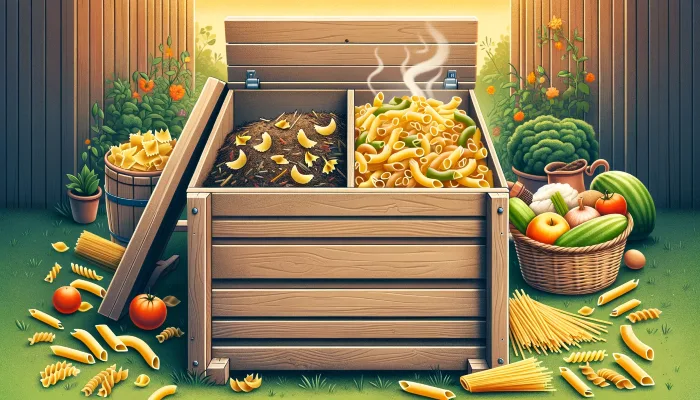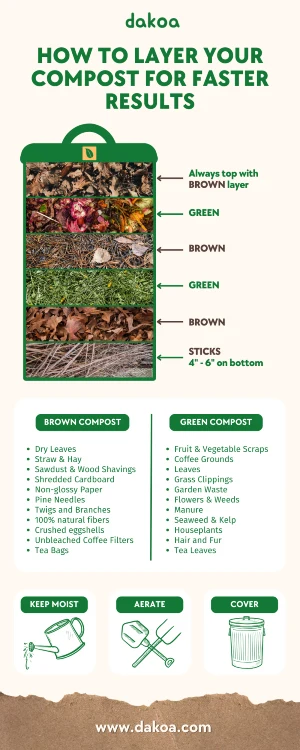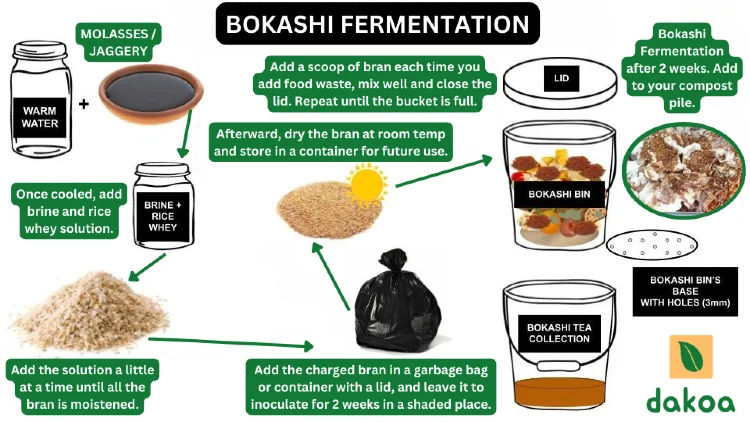Embarking on a composting journey turns your kitchen scraps, including pasta, into a treasure trove for your garden. The secret to a flourishing compost heap lies in understanding the nuances between composting cooked and uncooked pasta.
Uncooked Pasta
A blank canvas in the composting world, uncooked pasta, from spaghetti to fusilli, enriches your compost bin without much fuss. Crush or snap these dry strands into smaller pieces before introducing them to your compost pile. This simple step accelerates the decomposition process, transforming your pasta into carbon-rich material that microbes love to feast on.
Cooked Pasta
Here’s where it gets saucy. Leftover pasta, especially when dressed in olive oil, pasta sauce, or adorned with bits of cheese and meat, enters the composting scene with a bit more baggage. These additions, while delicious, introduce dairy products and oils into your compost, which can attract unwanted pests and potentially slow down the decomposition process.
The best way to compost cooked pasta is in small amounts, ensuring it’s well-mixed with carbon rich materials like cardboard and dried leaves and nitrogen-rich materials like grass clippings and vegetable scraps to maintain a balanced compost heap.
Addressing Common Concerns: Pests and Odors
No one invites pests to a party, and your compost bin is no exception. Incorporating pasta, particularly in large quantities or with savory sauces, might send the wrong signals to rodents and insects. Combat these unwanted visitors by burying pasta deep within your compost heap and balancing it with brown materials, such as dead leaves or shredded paper towels and cardboard, to absorb excess moisture and odors, promoting a healthier decomposition process.
To ensure your compost bin doesn’t turn into a pest magnet, consider adding pasta scraps in moderation. This practice, alongside regular aeration of your compost pile, discourages pests and accelerates the breakdown of organic matter, leading to a successful composting experience.
The Science of Decomposition: Green vs. Brown Materials
Composting is an art and science, requiring a delicate balance between green and brown materials. Green materials, your nitrogen-rich kitchen waste like vegetable scraps and coffee grounds, mingle with brown materials, the carbon-rich backbone of your compost, such as dry pasta, paper towels, and dead leaves. This mix ensures a healthy decomposition process, turning your food scraps into finished compost ready to enrich your garden.
Composting Alternatives for Pasta Waste: 4 Options
When it comes to composting pasta, there’s more than one way to enrich your garden soil. Beyond the traditional compost heap, alternative methods like Bokashi composting, vermicomposting, and hot vs. cold composting offer varied solutions for different types of pasta waste.
Bokashi Composting
Ideal for cooked pasta, especially those mixed with sauces, dairy, or oils. Bokashi Composting turns kitchen waste, including cooked pasta with sauces or oils, into compost without odors. It uses a special bran mixed with effective microorganisms to ferment the waste in a sealed bin.
This method is quick, taking about two weeks to ferment before the contents need to be buried in soil to finish decomposing. The advantage? It’s perfect for indoor use, making it a great option for apartment living or areas with limited outdoor space.
Vermicomposting
Vermicomposting uses worms to break down organic waste into high-quality compost. Red wigglers are the stars here, thriving on vegetable scraps, coffee grounds, and plain pasta, in moderation. They’re not fans of oils, meats, or dairy, so keep those out because they harm the worms.

The process is slower but yields nutrient-rich material, ideal for enhancing garden soil. This method suits small-scale composters and can be done indoors, in small spaces, offering a practical solution for recycling kitchen waste into plant food.
Hot Composting
Hot Composting is the fast track to turning waste into compost. It’s a shortcut style of composting that can handle cooked and uncooked pasta. It requires balancing green materials, like vegetable scraps and grass clippings, with brown materials, including dry pasta and paper towels.
The pile must be turned regularly to maintain oxygen flow and kept moist. High temperatures in the pile (between 90 to 140 degrees Fahrenheit) kill harmful bacteria and seeds, speeding up decomposition.
This method is great for gardeners who want compost quickly and have the space to manage a larger pile.
Cold Composting
Cold Composting is the set-it-and-forget-it approach. Just add your kitchen and garden waste, like vegetable scraps, coffee grounds, and plain cooked pasta or uncooked pasta, to a bin and let nature do its work.
It’s slower than hot composting, taking anywhere from a year to two, but requires less maintenance. You don’t need to turn the pile regularly or monitor temperatures. It’s an easy method if you’re not in a rush and have space to let the compost pile sit.
Each method has its pros and cons, depending on your composting goals, available space, and the types of pasta waste you’re dealing with.
Tips for Success with Alternative Methods
- Balance Is Key: Regardless of the method, maintaining the right balance of green (nitrogen-rich) and brown (carbon-rich) materials ensures a healthy composting process.
- Size Matters: Break down pasta into smaller pieces to speed up decomposition, especially in worm bins or Bokashi systems.
- Monitor and Adjust: Keep an eye on moisture levels and odors, adjusting your compost mix as needed to avoid attracting pests or creating odors.
Creative Solutions for Pasta Waste
Managing pasta waste doesn’t always start in the compost bin. By reducing waste at the source, you can save time and resources while still being environmentally friendly.
Cooking Just Enough
One of the best ways to manage pasta waste is by cooking the amount you need. Measure portions before cooking to avoid leftovers. If you do end up with extra, consider creative reuse in meals before opting to compost.
Creative Reuse of Leftover Pasta
Transform leftover pasta into new dishes. Fry up yesterday’s spaghetti with some vegetables for a quick meal, or mix it into a frittata. These reuse ideas keep your pasta out of the compost bin and reduce food waste.
Sharing Is Caring
If you have edible food that you can’t reuse, consider sharing it with friends, family, or community members. Many communities have food-sharing programs that accept leftover edible food, helping reduce waste and feed those in need.
By taking steps to cook only what you need and find new uses for leftovers, you can significantly reduce the amount of pasta that ends up in your compost bin or the trash.
Community Composting Programs: A Sustainable Alternative
For those who can’t compost at home, look into municipal compost programs or community gardens that accept organic waste. These programs often have the facilities to compost materials like cooked pasta and sauce, providing a sustainable way to dispose of kitchen waste while contributing to community greening efforts.
Participating in a green bin program or dropping off your organic waste at a community compost pile not only helps reduce landfill waste but also supports the production of nutrient-rich compost that can benefit public spaces and gardens.

Address Safety and Precautions
While composting pasta, especially with sauces or oils, it’s important to keep safety in mind to ensure a healthy compost process.
Composting Pasta Safely & Avoiding Harmful Bacteria
Pasta mixed with meat sauces or dairy products can attract harmful bacteria if not composted correctly. Use methods like Bokashi composting for these types of waste to avoid issues.
Pest Management
To prevent attracting pests, bury pasta deep in your compost pile and maintain a good balance of green and brown materials. Secure your compost bin with a tightly fitting lid or cover to deter rodents and insects.
Regular Maintenance
Check your compost pile regularly for signs of imbalance, such as bad odors or slow decomposition. Turn the pile to aerate it and add more brown materials if it becomes too wet or smelly.
By following these safety tips and precautions, you can compost pasta effectively without creating problems in your compost pile or garden.
FAQs and Troubleshooting Tips for Composting Pasta
Composting pasta comes with its set of questions and potential issues. Here’s how to tackle some of the most common concerns, ensuring your composting efforts lead to success.
Can I compost pasta with sauce?
Yes, but with caution. Pasta with sauce can be composted, especially if you use a Bokashi bin or vermiculture system. To compost in a traditional pile, try to remove excess sauce and cut the pasta into smaller pieces. This helps prevent attracting pests and speeds up the decomposition process.
How do I prevent pests when composting pasta?
Keep pests at bay by burying pasta well within the compost pile and maintaining a healthy balance of green and brown materials. If you’re dealing with cooked pasta, especially in large quantities or with sauces, consider a secure composting system like a Bokashi bin or a tightly sealed compost tumbler.
Why does my compost smell bad after adding pasta?
Bad odors usually indicate an imbalance, often from too much moisture or not enough air. Mixing in more brown materials, like dead leaves or shredded paper towels or small pieces of cardboard, can absorb excess moisture and reduce odors. Regularly turning your compost also introduces air, helping to break down materials more efficiently.
How long does pasta take to decompose in compost?
The decomposition time for pasta can vary, from a couple of months in a hot composting setup to longer in cold composting systems. Smaller pasta pieces, proper aeration, and the right balance of materials can speed up the process.
Can I compost moldy pasta?
Moldy pasta is actually ideal for composting, since the mold indicates that decomposition has already begun. Just ensure that it’s mixed well into your compost pile to avoid any potential pest issues.
Is it okay to add pasta with dairy or meat to compost?
While it’s possible, it’s not recommended for traditional composting due to the risk of attracting pests and the potential for harmful bacteria. If your pasta contains meat or dairy, consider using a Bokashi system, which is designed to handle these types of food waste more safely.
Wrapping Up: The Pasta Composting Guide
Composting pasta is a fantastic way to reduce kitchen waste and contribute to a healthier environment. Whether you’re dealing with dry, uncooked noodles or leftover spaghetti dinner, understanding the right composting methods can turn your pasta scraps into valuable compost for your garden.
More To Discover
Remember, the key to successful pasta composting is balance. By mixing pasta with the right amounts of green and brown materials and following the best practices outlined above, you can create a thriving compost pile without attracting pests or dealing with unpleasant odors.
Embrace composting as part of your sustainable living efforts, and let’s turn those pasta scraps into garden gold!






















